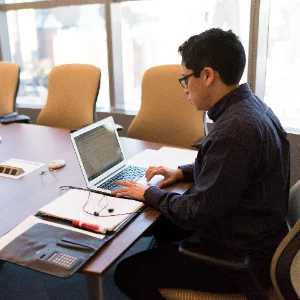Related Links
The Ringelmann Effect - Why You Never Finish Your Group Project
Updated on 14th December, 2022
The Ringelmann Effect Definition
Are you a team player or a lone wolf? According to this psychological effect, you would be better off being a lone wolf because being in a team means you and your teammates will likely slack off or become lazy.
Officially called the Ringelmann Effect, this psychological phenomenon describes the tendency for individual productivity to weaken as group size increases. This may come as a shock to you because we have been consistently told that a team of people could complete work more efficiently than individuals working separately through processes such as synergy and collaboration.

However, the Ringelmann Effect evokes a paradox that shows the complete opposite: individual productivity significantly decreases when group size increases. Considering this, to achieve a goal, the ideal way to approach it would not be to recruit as many hands as possible to help.
Instead, it would be to find the optimal number of participants, allowing people to retain maximal productivity levels and not squander their efforts.
Fun Fact - Have you ever been called a “Loafer?” Another way to describe the Ringelmann Effect is called social loafing, which refers to the proclivity for members of a social group to become lazy when brought together.
What is the Ringelmann Effect?
The Ringelmann Effect has been found to appear in many contexts ranging from team sports and professional environments to more mundane social actions such as clapping. When investigating the reasons behind the Ringelmann Effect, research combined the mechanisms of the phenomenon into two possible causes, which were:
1. Decreased coordination abilities
2. Decreased motivation
Concerning the lack of coordination abilities, it is fair to say that the larger the group, the more difficult it is to organize everyone to work efficiently towards a given goal.

For example, think of a time when you tried to plan a group activity with your friend group. Getting everybody to follow the same plan without any obstruction or challenge is almost impossible. Essentially, the same process happens throughout the workforce or in team-playing sports where larger groups of people demand more potent coordination abilities, which are difficult to attain.
As for the decrease in motivation, two possible processes have been proposed to explain this. The first is: when found in a larger group, there will be an individual belief that other group members will be able to complete a task successfully without any help. By believing this, some group members will disengage and become what is referred to as a “free-rider.” The second reason is that individuals from a large group may tend to perceive their group members as not putting their best effort into the task. Because of this, people do not want to look like the only person doing all the work while others are lazy, so they conform to the rest of the group’s behavior. This is called the “Sucker Effect."

This effect highlights a quirky trait of human psychology which is directly tied to the development of our ego. Although we evolved as social animals that were required to work together and be in each other’s presence in order to survive, once we developed enhanced brain matter, which created our neocortex, our behavior became much more emotionally driven instead of survival driven.
Hence, a case can be made for the association between the Ringelmann Effect and the human Limbic Cortex, which is the brain’s emotional center that is the root of jealousy, envy, and pride.
History of the Ringelmann Effect
The Ringelmann Effect was named after Maximilien Ringelmann (1861-1931), a French agricultural engineer who discovered it while running experiments on maximizing agricultural efficiency. Typically, agricultural work is undertaken using farm animals such as horses and oxen, but Ringelmann wanted to see how humans would pair against these animals. By undertaking these experiments, Ringelmann inadvertently became an unknowing social psychologist who brought to light humanity’s proclivity to be lazy when surrounded by others.
Fun Fact - Keep in mind that these experiments were undertaken long ago when systematic research on human factors was still in its infancy, so this was one of the earliest forms of recorded social psychological research!
Ringelmann observed the effect arise during an experiment where he asked participants to pull horizontally on a rope, like a tug of war, either individually, in a group of seven, or in a group of fourteen. During each experimental condition, Ringelmann would then measure the pulling force exerted by each group using a dynamometer (i.e., a device that registers pulling force). When analyzing the results after the experiment, Ringelmann saw that participants who pulled alone would display an average force of 85.3 kg per person.
In contrast, participants in the groups of 7 and 14 would display an average force of 65 and 61 kg, respectively. Surprised with his findings, Ringelmann tried to see if this effect would arise in different activities, such as pulling a two-wheeled farming cart, and found that the results were replicated every time.

Case Examples of the Ringelmann Effect
Case 1: Although this is not a concrete case, its constant mentions and references make it seem like it is an example of the Ringelmann Effect shared by everybody. In school, have you ever been put into a group project where you had to create a poster or a presentation to deliver to the rest of the class? And if you are honest, did you and your fellow group mates work to the best of your abilities to present the best end product? Or did all of you end up “free-riding” through the entire process and completing it last minute?
If you resonate with this example, you have definitely fallen victim to the Ringelmann Effect. The issue with most group projects is that no one is willing to be appointed as a leader, especially when you are in primary or secondary school. Because of this, no robust decisions are made to complete the project, and everyone slowly relegates their responsibility to the other, thus indirectly displaying the “Sucker Effect.” The moral of the story – Don’t blame yourself, blame the Ringelmann Effect.

Case 2: In 1979, psychologist Bibb Latane became highly interested in how the Ringelmann Effect worked and tried to recreate the effect in different social situations. In one of his experiments, Latane wanted to see whether the Ringelmann Effect would work for clapping. More specifically, he wanted to see how people would perfect the physically exerting tasks of clapping and shouting when alone compared to when they were in a group. Basically, he wanted to mimic the behavior of cheering. What he found was that individuals would reduce their exertions when they were asked to clap and shout in a group.
However, participants clapped and shouted significantly louder when asked to do this individually. To explain this, Latane proposed three factors. The first is attribution and equity, which states that participants may have judged their voice (since it was the closest to them) louder than the others. Hence, they reduced their exertions to stay at the same range as the others. However, if everyone thought the same way, then a collective reduction of exertion would be observed. The second factor was called submaximal goal setting, which basically states that participants were happy to match their exertions to the group’s standard instead of making the loudest noises possible. These findings were very interesting as they also showed us how humans tend to conform to a group’s collective behavior. The third, and final factor, was described as - The decreased contingency between input and outcome. This referred to how large groups presented opportunities for members to “hide in the crowd” and avoid any detrimental consequences of social loafing.
On the other hand, it also describes how large groups can make someone feel that they will not get the credit they deserve for their efforts because they may get drowned out in the crowd. Latane states that these contingencies are most apparent during instances of individual performance and are decreased in large group contexts.

Case 3: In 1993, the Ringelmann Effect had already been subject to extensive study, and researchers wanted to develop a thorough model that would outline all the factors responsible for decreasing productivity within a group context. To do this, psychologists Kipling Williams and Steven Karau teamed up and analyzed 78 studies investigating the Ringelmann Effect to see if they could develop an overarching model explaining the effect. After their analysis, they came up with the “Collective Effort Model” (CEM), which stated that the decrease in task productivity in group contexts was due to lowered expectations of attaining the task goal and the decrease in the perceived value of the goal.
Put simply, the more people are grouped together for a particular task, the less responsibility they will feel for completing it, and the less important it will feel for them to complete it. On the other hand, if you are alone or in a smaller group, the weight of responsibility is more prominent, and you will tend to personally identify more with a task you need to complete. Surprisingly, this study also found that men tended to display the Ringelmann Effect more than women.
A Beautiful Quote
- Anonymous Online Loafer
Questions and Answers
Q1. The Ringelmann effect leads to social loafing. But can it impact people outside the workplace too?
Yes, social loafing is observed in several scenarios outside the workplace where an individual's actions can go under the radar. Examples of such social loafing are avoiding voting, clapping without bothering whether it is audible, witnessing a public emergency such as an accident, and not doing anything about it.
Q2. Could the Ringelmann effect be related to the Bystander Effect?
The Bystander Effect occurs when several people are witnesses to an accident or emergency and do not act, thinking that somebody else will do something about it. This effect parallels the Ringelmann Effect, as social loafing is an essential theme.
Q3. How can an organization counter the Ringelmann Effect and social loafing of employees?
Companies should be wary of creating optimal team sizes where individual actions are observable and accountable. Unfortunately, there isn't a known fixed formula for calculating the right group size. However, specific rule-of-thumb guidelines develop within the company over time. For example, Jeff Bezos considers a group too large if two pizzas can't feed it.